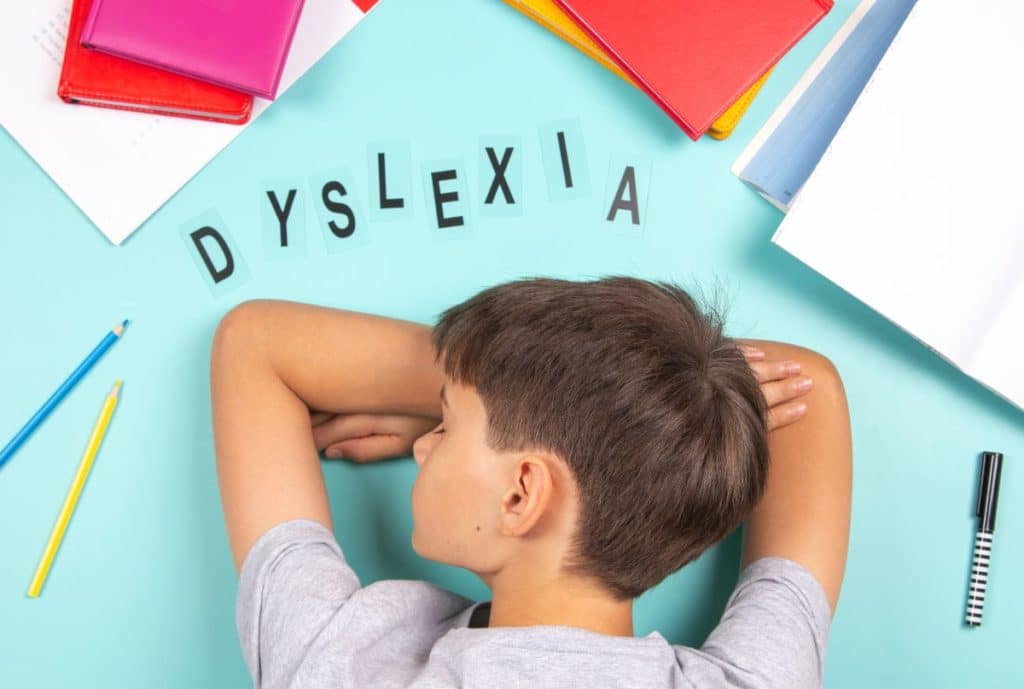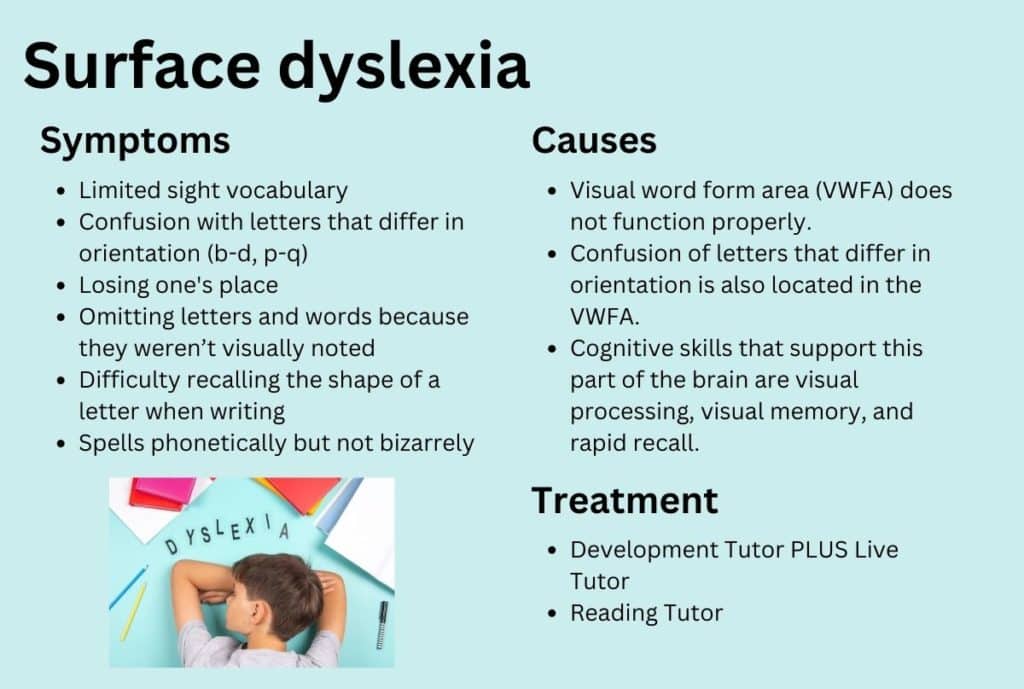
Hello Sue
My daughter Sofie has been diagnosed with surface dyslexia. She reverses b/d, p/q, the letters j and g, and reads words like ‘rat’ as ‘tar.’ She even reverses numbers.
I was heartbroken when I first learned my daughter was struggling in school. I didn’t want to believe it. Learning that Sofie had dyslexia was devastating. There is nothing in the parenting manuals to prepare one for this.
We have tried several treatments, but none have helped. I have heard about the Edublox system, and we are hoping it will also benefit our daughter.
We are desperate, especially since her IQ is in the superior range.
Melany
.
.
Dear Melany
Dyslexia isn’t just an academic and individual problem; it’s also a family problem. Having a child with a learning disability impacts the entire family. Parents, brothers, sisters, and even grandparents become involved, must adjust, and are changed in the process.
The dream of a boy or girl who tops the 1st-grade reading groups and shines in the spelling bee is shattered and replaced by the recognition that maybe years of reading help lay ahead. Millions of families live this reality daily, but not without it taking a toll on every family member and changing them in some way. It’s tough and comes with scars, but fortunately, Edublox offers a light at the end of the tunnel.
What is surface dyslexia?
Before going any further, and for the benefit of other readers, I will first explain what surface dyslexia is. Surface dyslexia is a subtype of dyslexia that refers to children who struggle with reading because they can’t recognize words by sight. Synonyms are dyseidetic dyslexia and orthographic dyslexia.
Reading by sight is an important skill for a couple of reasons. One is that some words have tricky spellings. Words like one, said, whose, and people can’t be sounded out — readers need to memorize them. The other reason has to do with reading fluency. To be able to read quickly and accurately, kids need to recognize many common words at a glance — without sounding them out.
Symptoms of surface dyslexia
The most common symptom of surface dyslexia is thus a very limited sight vocabulary; few words are instantly recognized from their whole configuration — they need to be sounded out laboriously, as though being seen for the first time. Children with surface dyslexia will also have difficulty learning irregular words that can’t be sounded out.
Other reading and spelling patterns include
- Confusion with letters that differ in orientation (b-d, p-q), or with words that can be dynamically reversed (saw-was).
- Losing the place because one doesn’t instantly recognize what had already been read, as when switching one’s gaze from the right side of one line to the left side of the following line.
- Omitting letters and words because they weren’t visually noted.
- Masking the image of one letter by moving the eye too rapidly to the subsequent letter may result in the omission of the first letter.
- Difficulty recalling the shape of a letter when writing.
- Spells phonetically but not bizarrely (laf-laugh).
Causes of surface dyslexia
It should be noted that two separate regions of the brain are involved in reading: one in sounding out words and the other in seeing words as pictures — which is what sight reading is all about.
Neuroscientists at Georgetown University Medical Center (2016) concluded that skilled readers can recognize words at lightning-fast speed when they read because the words have been placed in a sort of visual dictionary. This part of the brain is known as the visual word form area (VWFA) and functions separately from an area that processes the sounds of written words.
Glezer and her coauthors tested word recognition in 27 volunteers in two different experiments using fMRI. They could see that words that were different but sound the same, like ‘hare’ and ‘hair,’ activate different neurons, akin to accessing different entries in a dictionary’s catalog. If the sounds of the word had influence in this part of the brain, we would expect to see that they activate the same or similar neurons, but this was not the case — ‘hair’ and ‘hare’ looked just as different as ‘hair’ and ‘soup’.
In addition, the researchers found a different distinct region sensitive to sounds, where ‘hair’ and ‘hare’ did look the same. The researchers thus showed that the brain has regions that specialize in doing each of the components of reading: one area is doing the visual piece, and the other is doing the sound piece. The part of the brain that does not work well in the case of a child with surface dyslexia is most likely the region that is doing the visual piece, i.e., the VWFA.
In the most extensive study of its kind, Brem et al. (2020) confirmed that the VWFA is key to fluent reading.
While phonological processing skills and auditory memory are foundational to learning phonics, visual perceptual skills (such as spatial relations and form discrimination), visual memory, visuospatial memory, and rapid recall are foundational to sight-reading. Rapid recall refers to the speed with which the names of symbols (letters, numbers, colors, or pictured objects) can be retrieved from long-term memory. This process is often termed rapid automatized naming (RAN), and people with dyslexia typically score poorer on RAN assessments than typical readers.
What causes letter reversals?
The inability to discriminate between a ‘b’ and a ‘d’, or to read words like ‘was’ as ‘saw’ is usually caused by a visual perceptual problem, specifically a problem with processing position in space.
Before reading or learning anything, one has to become aware of it through one of the senses. Usually, one has to hear or see it. In other words, perception must take place. Subsequently, one has to interpret whatever one has seen or heard. In essence, then, perception means interpretation. Of course, a lack of experience may cause a person to misinterpret what he has seen or heard. In other words, perception represents our apprehension of a present situation in terms of our past experiences, or, as stated by the philosopher Immanuel Kant (1724-1804): “We see things not as they are but as we are.”
The human body consists of two halves: a left side and a right side. The human brain also has two halves, connected by the corpus callosum. Mindful of the wise words of Immanuel Kant that man does not see things as they are but as he is, it is inevitable that a person will interpret everything in terms of their own sidedness.
A child or adult who has not learned to interpret correctly in terms of their sidedness yet, who has not learned to distinguish properly between left and right, will inevitably experience problems when they find themselves in a situation where they are expected to interpret sidedness. One such situation, where sidedness plays a critical role, is when a person is expected to distinguish between a ‘b’ and a ‘d’. It is clear that the only difference between the two letters is the position of the straight line — it is either left or right.
Noteworthy, research by Pedago et al. (2011) shows that the ability to distinguish the orientation of letters (e.g., to differentiate between a ‘b’ and a ‘d’) is also located in the VWVA. This confirms that the VWVA should be a prime target for intervention.
Treatment for surface dyslexia
The good news is that weaknesses in cognitive skills can be attacked head-on; it is possible to strengthen these mental skills through training and practice. Edublox’s Development Tutor aims to strengthen underlying cognitive skills such as visual processing, visual memory, visuospatial memory, and rapid recall.
In addition, a child with surface dyslexia will also need application in the form of reading and spelling lessons. Edublox’s live tutoring program is based on the proven Orton Gillingham approach but simultaneously aims to develop the brain’s VWFA mentioned above.
Watch this playlist of customer reviews and experience how Edublox training and tutoring help turn surface dyslexia around. Book a free consultation to discuss your child’s learning needs.
If live tutoring is impossible, I suggest you consider Edublox’s Reading Tutor program.
Melany, it is my sincere hope that I will be able to add Sofie’s success story in the near future.
.
Key takeaways

Regards,
Sue
..
More about Sue
Sue is an educational specialist in learning problems and dyslexia and has a B.A. Honors in Psychology and B.D. degree. Early in her professional career, Sue was instrumental in training over 3,000 teachers and tutors, providing them with the foundational and practical understanding to facilitate cognitive development among children who struggle to read and write. With over 30 years of research to her name, Sue conceptualized the Edublox teaching and learning methods that have helped thousands of children who were struggling to read, learn and achieve. In 2007, she opened the first Edublox reading and learning clinic, and now there are 30 Edublox clinics internationally. Her proudest moments are when she sees a child who had severe learning difficulties come top of their class after one or two years at Edublox. Sue always takes time to collect the ‘hero’ stories of students whose self-esteem is lifted as their marks improve.


